
The Getting Started with Dataiku course provides a comprehensive introduction to Dataiku’s collaborative data science environment. It guides learners through core concepts such as data connections, dataset preparation, visual recipes, and machine learning model creation. Participants gain hands-on experience in building data workflows, automating tasks, and generating insights. Ideal for analysts, engineers, and data enthusiasts, this course builds a strong foundation for advanced analytics and AI-driven decision-making.
Getting Started with Dataiku Training Interview Questions Answers - For Intermediate
1. What is the difference between managed and external datasets in Dataiku?
In Dataiku, managed datasets are stored and controlled entirely within the Dataiku system, typically in its internal storage or designated database. They are generated as outputs of recipes and automatically maintained. External datasets, on the other hand, exist outside Dataiku—such as in cloud storage, databases, or file systems—and are only linked to the platform via connections. This separation helps manage data governance, storage costs, and performance optimization depending on the use case.
2. How does Dataiku ensure reproducibility in data science projects?
Dataiku ensures reproducibility by maintaining project versioning, Flow dependencies, and script histories. Each recipe is stored with its configuration and input-output dataset links, allowing projects to be rerun consistently even after modifications. Git integration further enables version control, ensuring that every change in code, configuration, or dataset transformation can be tracked, rolled back, or replicated in other environments.
3. What are scenarios in Dataiku and their common use cases?
Scenarios are automated workflows that execute a series of predefined tasks based on triggers such as time schedules, data updates, or manual runs. Common use cases include automating data refreshes, model retraining, periodic report generation, and integration with external APIs. Scenarios improve productivity and ensure that workflows continue running smoothly without constant human supervision.
4. How does Dataiku handle large datasets efficiently?
Dataiku efficiently manages large datasets through distributed processing and integration with big data frameworks such as Hadoop, Spark, and Snowflake. It supports in-database processing, which minimizes data movement by executing transformations directly where the data resides. Additionally, caching mechanisms and partitioning help reduce computational overhead and improve pipeline performance.
5. What is the purpose of a “bundle” in Dataiku?
A bundle in Dataiku is a package that contains all project components—datasets, models, recipes, and configurations—ready for deployment or transfer between environments. Bundles ensure consistency across development, testing, and production environments, enabling easy migration and version-controlled deployments. This concept supports MLOps practices and reproducible results across teams.
6. How can one monitor the performance of models in Dataiku after deployment?
After deployment, model performance in Dataiku can be monitored using dashboards, metrics stores, and drift detection tools. Dataiku automatically tracks key performance indicators (KPIs) like accuracy and data drift to alert users if model predictions deviate from expected ranges. Scheduled evaluations and real-time monitoring help maintain model reliability and support retraining decisions when degradation occurs.
7. Explain the role of visual machine learning in Dataiku.
Visual machine learning in Dataiku allows users to build predictive models without coding. The interface guides users through feature selection, algorithm choice, hyperparameter tuning, and performance evaluation. It simplifies complex modeling tasks and democratizes machine learning, enabling business analysts to participate in model creation while maintaining transparency through visual explanations and reports.
8. What is the difference between datasets, managed folders, and streaming endpoints in Dataiku?
Datasets store structured data like tables, managed folders handle unstructured or semi-structured files such as images, logs, or documents, and streaming endpoints manage real-time data ingestion from sources like Kafka. This distinction allows Dataiku to cater to diverse data types and workflows, providing flexibility for ETL, AI, and real-time analytics use cases.
9. How does Dataiku ensure data security and compliance?
Dataiku ensures data security through role-based access control, encryption, and audit trails. Administrators can restrict access at the project, dataset, or connection level. The platform supports data masking, credential vaulting, and secure connection handling to prevent unauthorized data exposure. Its compliance with enterprise standards such as GDPR and SOC 2 ensures data integrity and governance.
10. How is parameterization used in Dataiku projects?
Parameterization in Dataiku allows dynamic control of workflows by defining variables that can change at runtime. Parameters can be applied to recipes, scenarios, or datasets to make pipelines more flexible and reusable. For example, a single flow can handle different regions or time periods by adjusting parameters instead of duplicating recipes.
11. What is the role of Dataiku APIs in automation and integration?
Dataiku APIs allow programmatic interaction with the platform, enabling automation, integration with external systems, and remote project management. APIs can trigger scenarios, deploy models, fetch datasets, or modify configurations from external applications. This supports integration with DevOps pipelines, MLOps frameworks, and enterprise automation tools like Airflow or Jenkins.
12. Explain the use of notebooks in Dataiku.
Notebooks in Dataiku provide a coding environment for Python, R, or Scala directly within the platform. They are used for exploratory data analysis, custom model development, or integration with external libraries. Notebooks are linked to project datasets, allowing users to manipulate data interactively while maintaining synchronization with the main Flow.
13. What is a data pipeline, and how is it implemented in Dataiku?
A data pipeline in Dataiku represents a series of transformations and processes that move and refine data from raw input to final output. It is implemented through the Flow using datasets and recipes. Each step defines how data is read, processed, and stored, enabling clear visualization of dependencies and simplifying maintenance and debugging.
14. How does Dataiku support deployment in production environments?
Dataiku provides several deployment mechanisms including API endpoints, automation nodes, and CI/CD integrations. Models can be deployed for real-time scoring or batch processing, and projects can be promoted across dev, test, and production environments using bundles. Automated testing, rollback options, and monitoring ensure stability and governance in production.
15. How does Dataiku promote collaboration between technical and non-technical users?
Dataiku bridges the gap between technical and non-technical users by combining no-code, low-code, and full-code options in a unified platform. Business analysts can use visual recipes and dashboards, while data scientists can extend workflows with code and custom models. Shared projects, version control, documentation, and visual Flows ensure that all users contribute effectively to the same data objectives.
Getting Started with Dataiku Training Interview Questions Answers - For Advanced
1. How does Dataiku support CI/CD integration for continuous delivery of data science workflows?
Dataiku’s CI/CD integration bridges data science and software engineering practices, allowing teams to deploy and manage models and workflows seamlessly. It connects with systems like Jenkins, GitLab CI, and Azure DevOps to automate testing, validation, and promotion of Dataiku projects from development to production environments. Using Dataiku bundles and APIs, developers can automate the migration of flows, datasets, and models between environments while maintaining consistent configurations. Git integration ensures version control over code recipes, notebooks, and configurations, allowing collaborative development with rollback options. The integration enables continuous testing, automated retraining, and deployment pipelines, ensuring reproducibility, governance, and faster innovation cycles in machine learning delivery.
2. What mechanisms does Dataiku use to handle data lineage and impact analysis?
Dataiku maintains comprehensive data lineage through its Flow architecture, which visually represents data transformations from raw input to final output. Each dataset and recipe is automatically documented, recording its dependencies, schema, and operations applied. The platform provides lineage reports and impact analysis tools that track how data flows across projects and environments, enabling users to identify the downstream effects of schema changes or recipe modifications. This visibility is crucial for auditing, debugging, and compliance, ensuring that organizations understand the origin, transformation logic, and consumption of every data element used in analytics or machine learning models.
3. How does Dataiku manage model retraining and lifecycle automation?
Dataiku supports automated model retraining through scenarios and model evaluation stores. Users can schedule model retraining based on triggers like new data availability, performance degradation, or time intervals. The automation node ensures consistent retraining pipelines and tracks metadata such as feature drift and accuracy trends over time. Dataiku’s model evaluation store provides centralized visibility into all deployed models, allowing teams to compare historical performances and make data-driven retraining decisions. Combined with API services, retrained models can be automatically redeployed into production environments, ensuring models remain adaptive to evolving data without manual intervention.
4. How does Dataiku leverage Kubernetes for scalability and orchestration?
Dataiku integrates with Kubernetes to manage scalable, containerized deployments of its computation and automation nodes. Kubernetes enables horizontal scaling by dynamically allocating resources for concurrent jobs and parallel data processing. Dataiku uses Kubernetes pods to run compute-intensive workloads, such as model training or Spark-based transformations, while ensuring isolation and efficient utilization of infrastructure. This orchestration also supports elastic scaling for cloud-native environments, allowing the platform to handle variable workloads efficiently. Administrators can define node pools and resource quotas, ensuring that high-priority workflows receive necessary computational resources without performance degradation.
5. How does Dataiku facilitate responsible AI and bias mitigation in models?
Dataiku incorporates responsible AI principles through fairness testing, explainability, and bias detection tools. It enables users to assess model bias by analyzing feature contributions, subgroup performance metrics, and demographic parity. For instance, fairness reports identify if certain variables disproportionately influence predictions across gender, age, or region. SHAP-based explanations and visual interpretability reports promote transparency in model decision-making. Additionally, Dataiku supports ethical governance workflows, allowing compliance teams to review, approve, or reject models before deployment. This holistic approach ensures AI outcomes remain explainable, unbiased, and aligned with corporate responsibility and regulatory standards.
6. Explain how Dataiku ensures reproducibility across teams and environments.
Reproducibility in Dataiku is achieved through version control, environment packaging, and configuration management. Each project encapsulates its datasets, recipes, and models in a self-contained bundle that can be deployed across development, testing, and production environments without dependency conflicts. Git integration allows teams to track changes in code, configurations, and datasets, enabling rollbacks and branching for parallel experimentation. Dataiku also supports Docker and Conda environments, ensuring consistent library versions for model execution. Together, these capabilities ensure that workflows can be replicated accurately across users, locations, and timeframes, reinforcing scientific integrity and operational reliability.
7. How does Dataiku integrate Natural Language Processing (NLP) within its framework?
Dataiku offers built-in support for NLP through dedicated visual recipes and Python-based code integration. It includes text preprocessing functions such as tokenization, stemming, and lemmatization, along with advanced modeling capabilities using libraries like spaCy, NLTK, and Transformers. Users can build sentiment analysis, topic modeling, and named entity recognition pipelines using either pre-trained models or custom embeddings. Dataiku also allows text visualization via word clouds and frequency analysis charts. For large-scale NLP, Dataiku integrates with GPU-enabled clusters and APIs like OpenAI or Hugging Face, enabling organizations to deploy language models efficiently in production environments.
8. How does Dataiku handle incremental data updates and pipeline optimization?
Dataiku optimizes data workflows by supporting incremental builds, which process only newly added or modified records instead of reprocessing entire datasets. Through partitioning and change-tracking mechanisms, it minimizes compute time and storage usage for large-scale ETL pipelines. Incremental processing is configured at the recipe level, allowing Dataiku to detect when upstream data has changed and automatically trigger downstream updates. This approach ensures real-time data freshness while optimizing resource consumption. Combined with caching and dependency-aware scheduling, incremental updates significantly enhance scalability and performance for continuous data integration workflows.
9. What are the key differences between the Design, Automation, and Deployer nodes in Dataiku?
The Design node serves as the collaborative workspace for building and testing workflows, datasets, and models. The Automation node executes production-ready scenarios and batch processes, managing scheduled or event-triggered workflows. The Deployer node acts as the governance and deployment hub, facilitating model promotion, rollback, and monitoring across environments. Together, these nodes create a DevOps-aligned ecosystem—where data scientists focus on development, MLOps engineers handle production automation, and administrators oversee controlled deployment lifecycles. This separation of duties enhances scalability, governance, and fault tolerance in enterprise setups.
10. How does Dataiku enable integration with data catalog and metadata management systems?
Dataiku supports integration with enterprise data catalogs such as Collibra, Alation, and Apache Atlas. It synchronizes metadata—including dataset descriptions, schema details, and lineage information—ensuring consistent data governance across platforms. Metadata synchronization enables analysts to search, classify, and tag datasets directly within Dataiku, maintaining a single source of truth. The integration enhances discoverability and compliance by automatically registering new datasets, recipes, and models into corporate catalogs. This alignment between Dataiku and metadata management systems strengthens data transparency and auditability in large-scale data ecosystems.
11. How does Dataiku manage performance monitoring for deployed APIs?
Dataiku’s API Deployer provides monitoring tools that track response times, error rates, and throughput for deployed endpoints. Administrators can visualize API usage statistics through real-time dashboards and configure alerts for performance degradation. Dataiku supports horizontal scaling of API nodes to accommodate high traffic, and logging mechanisms capture detailed request and response data for debugging. Integrations with observability tools like Prometheus or Grafana further enhance monitoring by offering external analytics and anomaly detection. This ensures production APIs remain reliable, efficient, and compliant with service-level objectives.
12. What strategies does Dataiku use to manage model drift and data drift?
Dataiku continuously monitors both model and data drift to maintain predictive accuracy. Model drift refers to a degradation in model performance, while data drift involves changes in the underlying input distributions. Dataiku automatically computes drift statistics for numerical and categorical features, comparing real-time data with training baselines. Alerts and retraining triggers can be configured when drift exceeds predefined thresholds. The evaluation store consolidates these metrics across projects, allowing teams to track performance trends and retraining frequency. This proactive management ensures that deployed models adapt effectively to evolving real-world data.
13. How does Dataiku balance low-code accessibility with advanced coding flexibility?
Dataiku achieves balance by providing visual tools for non-programmers alongside full scripting environments for data scientists. Visual recipes allow drag-and-drop operations for data cleaning, joins, and aggregations, while code recipes and notebooks enable the integration of Python, R, or SQL logic. Users can transition between visual and code modes within the same Flow, ensuring collaboration without loss of control. This dual approach democratizes analytics—empowering business users to contribute insights—while allowing developers to build advanced, customized algorithms and automation scripts as needed.
14. How does Dataiku integrate with large-scale data warehouses and lakehouses?
Dataiku natively connects with modern data warehouses such as Snowflake, BigQuery, Databricks, and Redshift. It supports in-database processing, allowing queries and transformations to execute directly within the warehouse environment. This reduces latency, leverages existing compute power, and minimizes data transfer. Dataiku also integrates with lakehouse architectures like Delta Lake and Apache Iceberg for hybrid structured-unstructured analytics. These integrations enable organizations to unify ETL, AI, and business intelligence workflows under one system while maintaining the scalability and elasticity offered by cloud-native data infrastructure.
15. How does Dataiku’s extensibility empower enterprises to adopt domain-specific AI solutions?
Dataiku’s extensibility enables enterprises to build domain-tailored AI solutions through plugins, APIs, and custom applications. Teams can create reusable components that encapsulate industry-specific logic, such as fraud detection models for banking or predictive maintenance workflows for manufacturing. APIs allow integration with proprietary systems, while web apps within Dataiku provide interactive dashboards and AI-driven tools for end users. This modular design allows enterprises to standardize AI development across departments while customizing solutions for unique business challenges, thus accelerating innovation without compromising scalability or governance.
Course Schedule
| Dec, 2025 | Weekdays | Mon-Fri | Enquire Now |
| Weekend | Sat-Sun | Enquire Now | |
| Jan, 2026 | Weekdays | Mon-Fri | Enquire Now |
| Weekend | Sat-Sun | Enquire Now |
Related Courses
Related Articles
Related Interview
Related FAQ's
- Instructor-led Live Online Interactive Training
- Project Based Customized Learning
- Fast Track Training Program
- Self-paced learning
- In one-on-one training, you have the flexibility to choose the days, timings, and duration according to your preferences.
- We create a personalized training calendar based on your chosen schedule.
- Complete Live Online Interactive Training of the Course
- After Training Recorded Videos
- Session-wise Learning Material and notes for lifetime
- Practical & Assignments exercises
- Global Course Completion Certificate
- 24x7 after Training Support


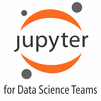

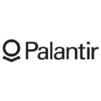


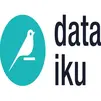

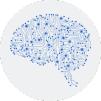

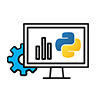
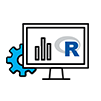

 Join our Live Instructor-Led online classes delivered by industry experts
Join our Live Instructor-Led online classes delivered by industry experts